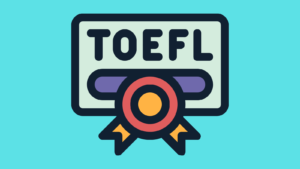By Josh MacPherson, Head Instructor at TST Prep
You’re stuck.
And, you can’t seem to improve your TOEFL Listening test scores.
On top of all that,you have read the books, and memorized all the best TOEFL strategies, but still your score hasn’t improved.
If you are like most students, the problem is simple: You are focusing too much on TOEFL test-taking strategies.
After learning about the test and taking it multiple times with little to no improvement, it is time to adjust your study habits. This is going to be a challenge because your mindset needs to switch. No longer will you be preparing for the TOEFL, instead, you will be building your listening comprehension.
Unfortunately, my students and I had to learn this the hard way. As the head instructor at TST Prep, an online TOEFL school, I have had the privilege of working with hundreds of students over the years. And while many have achieved their desired score, it pains me to admit this, but, others have failed to improve.
One student, Sara, comes to mind.
“What was wrong?” I asked myself.
She
- learned the best TOEFL strategies
- studied for almost two hours a day
- knew how to take notes and listen at the same time
And still, Sara couldn’t earn higher than a 20 in the TOEFL Listening section.
I turned to the research and changed my approach to incorporate a more holistic method that could address students like Sara who simply did not have the comprehension needed to improve her TOEFL score.
Keep in mind that this approach is primarily for students who need to improve their score by three or more points. Many students simply need the traditional approach with TOEFL practice and strategy. If this is the case, check out TST Prep’s TOEFL Emergency Course, which can prepare you for everything you need to know about the TOEFL in two days (seriously!). You can learn more here.
For those of you who need to improve your TOEFL Listening score by three or more points, here are four approaches to building your listening comprehension:
#1: Vary your practice with extensive and intensive listening
Most ELT educators are aware of the power of extensive reading. The idea behind extensive reading is simple: Students should read easy and enjoyable text in which they comprehend up to 98% of the vocabulary. The more you read, the more vocabulary you see. If the text is easy and you understand almost all of it, you will reinforce what you know and discover what you do not know.
Students can apply the same principle to listening. Find materials you enjoy listening to and understand up to 90% of what is being said. This may be difficult with authentic native-English materials, like Hollywood movies or situation comedies. However, you can listen along with graded readers or try some of the listening activities at Elllo English.
Your extensive, enjoyable listening practice should be coupled with the more intensive academic TOEFL listening.
Still, listening to 5-minute academic lectures, like in the TOEFL, is not the ideal way to practice, which brings us to method #2.
Method #2: Break down long audio passages into shorter ones
This was touched upon in the How to Improve Your TOEFL Reading article, but let me reiterate the point here.
It would be much better if you focused on shorter passages that last less than two minutes
The passages in both the reading and listening sections of the TOEFL are not ideal for building listening comprehension. The lectures are five minutes long! I don’t even listen to my mother speak for five minutes straight.
It would be much better if you focused on shorter passages that last less than two minutes. Remember, your goal is to improve overall listening comprehension, not to answer TOEFL questions.
Shorter passages of about 90 seconds still contain around 150-200 words, which is more than enough to analyze and study. In these short passages, you will be able to pinpoint the pronunciation patterns you struggle to understand and devise ways to improve upon those weaknesses.
Where can you find 2-minute audio passages of academic lectures?
Check out TST Prep’s library of more than 100 academic lectures, all less than two minutes long.
#3: Listen actively
Before you listen to any passage, have a goal in mind.
Most students do not have a goal in mind. They listen to passages like passengers in a car, sitting back and waiting to arrive. Active listeners are drivers. They do not control the road (passage), but they can steer the vehicle and find the fastest possible route to their destination.
In other words, imagine your goal is to find the main idea of the passage and simplify it for a child.
Listen the way you drive, pay attention and have a goal in mind. Active listening can get quite complicated, so let’s simplify it by having one clear mission before every passage. Your mission is to answer this one question:
How can I explain this topic in a clear and simple way to a six-year-old?
In other words, imagine your goal is to find the main idea of the passage and simplify it for a child. Most students try to understand each and every detail of the passage and miss the main idea. Understanding the main idea of the passage will help you answer questions and explain the topic to others.
You can read more a<style=”color: blue;” href=”http://www.onestopenglish.com/skills/listening/teaching-tips/listening-matters/listening-matters-active-listening/554465.article” target=”_blank” rel=”noreferrer noopener” aria-label=”bout active listening here, (opens in a new tab)”>bout active listening here, but for the TOEFL, you only want to find the main idea and put in your own words in a clear and simple way that even a six-year-old would understand.
#4: Practice with Cloze Activities
Quick review.
So far we have talked about the way to practice: a mix of extensive and intensive listening along with shorter audio files.
After that, we went into detail on how to think about the listening (active listening).
And now in the last step, you are going to practice word and pronunciation identification with fill-in-the-blank (cloze) practice.
Here is an example. Listen to this short audio passage from an astronomy class and follow along with the transcript. Fill in the blanks with the words and phrases you hear.
“Astronomy is defined as the study of the objects that lie beyond our (1) the and the processes by which these objects interact with one another. We will see, though, that it is much more. It is also humanity’s attempt to organize what we learn into a clear (2) of the universe, from the (3). its birth in the Big Bang to the present moment.
In considering the history of the universe, we will see again and again that the (4) evolves; it changes in profound ways over long (5) For example, the universe made the carbon, the calcium, and the oxygen necessary to construct something as interesting and (6) as you. Today, many billions of years later, the universe has evolved into a more hospitable place for life. Tracing the evolutionary processes that continue to shape the universe is one of the most important (and satisfying) parts of (7)
I’ll get to the answers in a minute…
This type of activity should look familiar, with a few small differences. There are times where you have to identify the phrase, rather than just a single word. When a native speaker uses a word, it is hardly ever isolated. We use words and phrases in various contexts, surrounded by other words and phrases and the pronunciation changes depending on the situation.
As you continue to practice with these types of materials, you will begin to notice patterns in the North American accent (i.e. ‘on the’ is often pronounced like ‘onda’), and this will be a key asset to utilize when you listen to TOEFL passages on test day.
(answers: 1. planet Earth 2. history 3. instant of 4. cosmos 5. periods of time 6. complicated 7. modern astronomy)
Improving Your TOEFL Listening Score Summary
Here is a quick recap for those of you who like to skip to the end for the summary (I know you because I am one of you).
These are the four ways to improve your TOEFL Listening Score:
1: Vary your practice with extensive and intensive listening
2: Break down long audio passages into shorter ones
3: Listen actively
4: Practice with Cloze Activities
Be sure to check out TST Prep’s library of over 100 short academic lectures to help you practice for the TOEFL and build your listening skills.
What do you think? Do you know a better way to improve student listening comprehension? Reach out to me at [email protected] and let me know.
Don’t be a stranger 😉
Oh, and if you are in need of some TOEFL practice, here is a link to a complete TOEFL test with an answer key and scoring chart.




